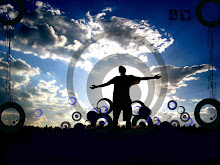 Viruses attacking E. coli, (electron microscopy picture). (Credit: Image courtesy of Norwegian School of Veterinary Science)
Viruses attacking E. coli, (electron microscopy picture). (Credit: Image courtesy of Norwegian School of Veterinary Science) Bacteriophage Structure© Gary E. Kaiser
Bacteriophage Structure© Gary E. Kaiser
For her doctorate, Camilla Sekse studied how viral DNA can be transmitted from pathogenic to non-pathogenic E. coli. Viruses that infect bacteria in this way are called bacteriophages. Her findings reveal that such transmission of bateriophage between bacteria can occur, and that in the case of E. coli it can transform a harmless bacterium into one capable of causing disease in man.
Escherichia coli is a complex group of gut bacteria that are found in all warm-blooded animals and are for the most part harmless. A few, however, cause disease in man and animals. The E. coli bacteria that produce a poison called Shiga toxin can produce a range of effects in man. One common effect is bloody diarrhoea followed by complications such as kidney failure (haemolytic uraemic syndrome). The bacteria may be spread through contaminated food or water, or from contact with animals.
A combination of qualities necessary to produce disease
A sequence of favourable circumstances needs to exist before E. coli can produce disease. The most important of these is the ability to produce Shiga toxin. The gene that codes for Shiga toxin is not innate, but is contained within bacteriophages. In other words, the bacterium needs first to be infected by a bacteriophage coding for Shiga toxin in order to produce the toxin itself.
In her work, Camilla Sekse studied E. coli O103:H25 bacteria isolated both from foodstuffs and patients from the E. coli outbreak of 2006. She and her colleagues discovered special features of these E. coli bacteria that separate them from ordinary, benign forms. This discovery lead to it being easier to demonstrate E. coli O103:H25 in suspect food products.
Dangerous bacteria in our environment
It seems that E. coli O103:H25 has existed in Norway for some time, since this bacterium was also found to be a cause of the kidney failure outbreaks both in 2003 and 2005. Studies of the entire genome of this bacterium have shown that it more closely resembles the enteropathogenic E. coli (bacteria that cause diarrhoea) than the more common, Shiga toxin-producing E. coli, namely E. coli O157:H7.
Escherichia coli bacteria that are not disease-causing can absorb and lose bacteriophages coding for Shiga toxin, and can be important in the spread of these bacteriophages in the environment, even though they don't themselves cause disease. It appears that some E. coli bacteria can both more easily absorb and lose bacteriophages that contain the gene for Shiga toxin, and this may well be the case for E. coli O103:H25.
The work was primarily carried out at the Department Food Safety & Environment of the Norwegian School of Veterinary Science. Parts of the study were done in close collaboration with scientists of the University of Barcelona and at the Technical University of Denmark in Copenhagen, and in co-operation with the Norwegian Institute of Public Health in Oslo. The project was financed by the Research Council of Norway and the Norwegian School of Veterinary Science.

0 komentar:
Posting Komentar